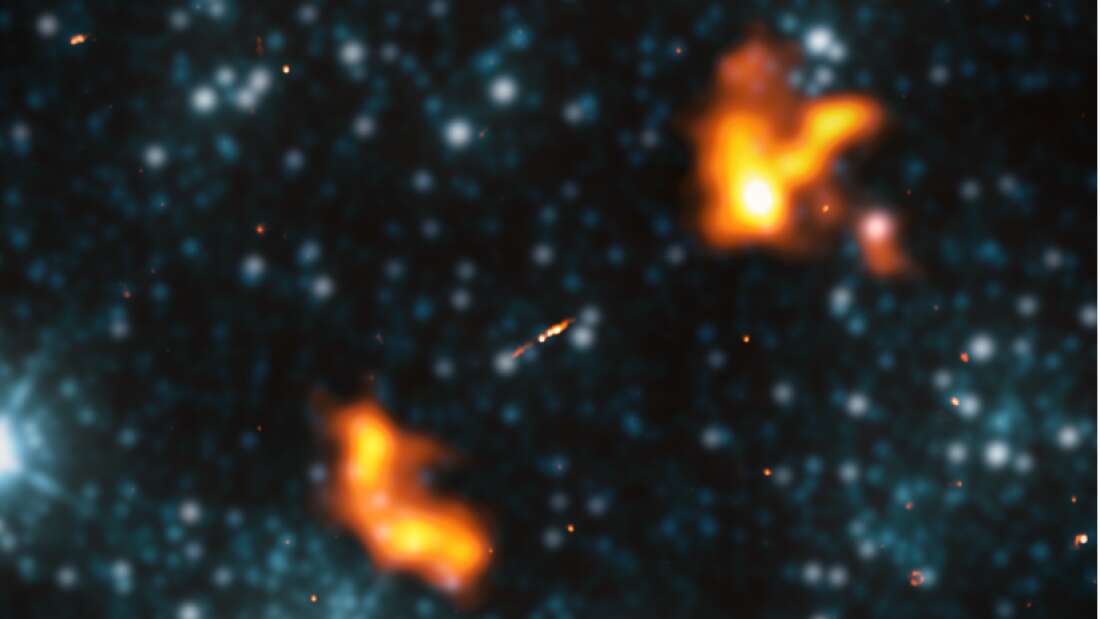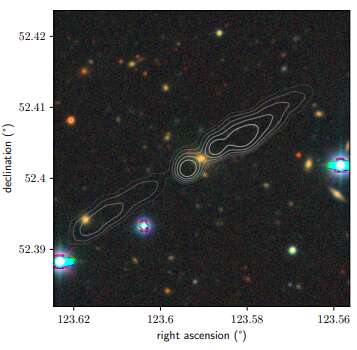
Scientists have found the biggest galaxy ever! Situated about 3 billion light -years away, “Alcyoneus” is a giant radio galaxy that spreads over 16.3 million light-years (5 megaparsecs).
The length of this galaxy is astounding. For perspective, the comoving distance from Earth to the edge of the visible universe is 45.7 billion light-years. Here’s some more perspective – our home galaxy, the Milky Way is about 100,000 light-years long.
Why is Alcyoneus so huge?
Despite its enormous size, the galaxy is rather ordinary, just like our own Milky Way. Giant radio galaxies like Alcyoneus consist of a host galaxy along with “colossal jets and lobes that erupt forth from the galactic center,” ScienceAlert explained. When these lobes and jets interact with the mega-galaxy, they accelerate electrons to produce radio emission.

These radio lobes are created by active supermassive black holes situated at the centre. Even the Milky Way has radio lobes but scientists don’t understand why some galaxies grow to such massive size.
The scientists set out to find “large-scale environments that are highly conducive to giant radio galaxy growth” where largest giant radio galaxies are likely to be found using data collected by the LOw Frequency ARray (LOFAR) in Europe.

What they found was astounding. “We have discovered what is in projection the largest known structure made by a single galaxy – a giant radio galaxy with a projected proper length [of] 4.99 ± 0.04 megaparsecs. The true proper length is at least … 5.04 ± 0.05 megaparsecs,” researchers wrote in the study that has been accepted for publication in Astronomy & Astrophysics.

They also found that the host galaxy has 240 times the mass of the Sun and the supermassive black hole at its centre is over 400 times the mass of the Sun.